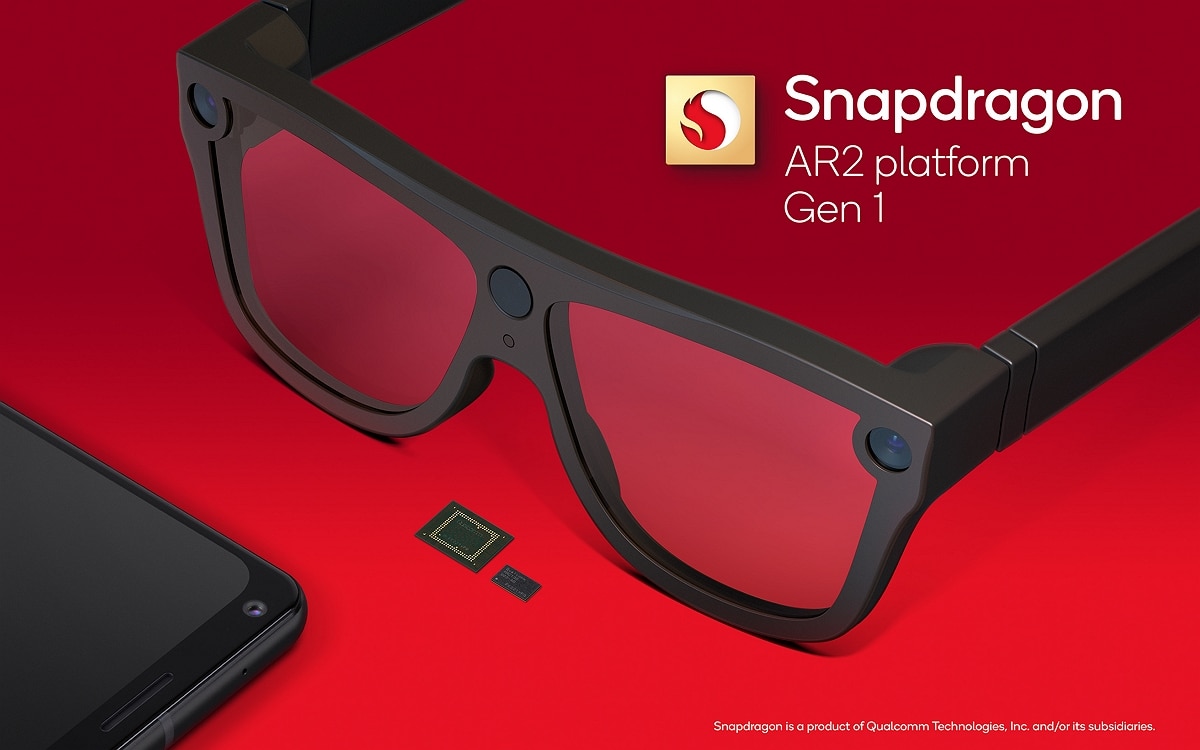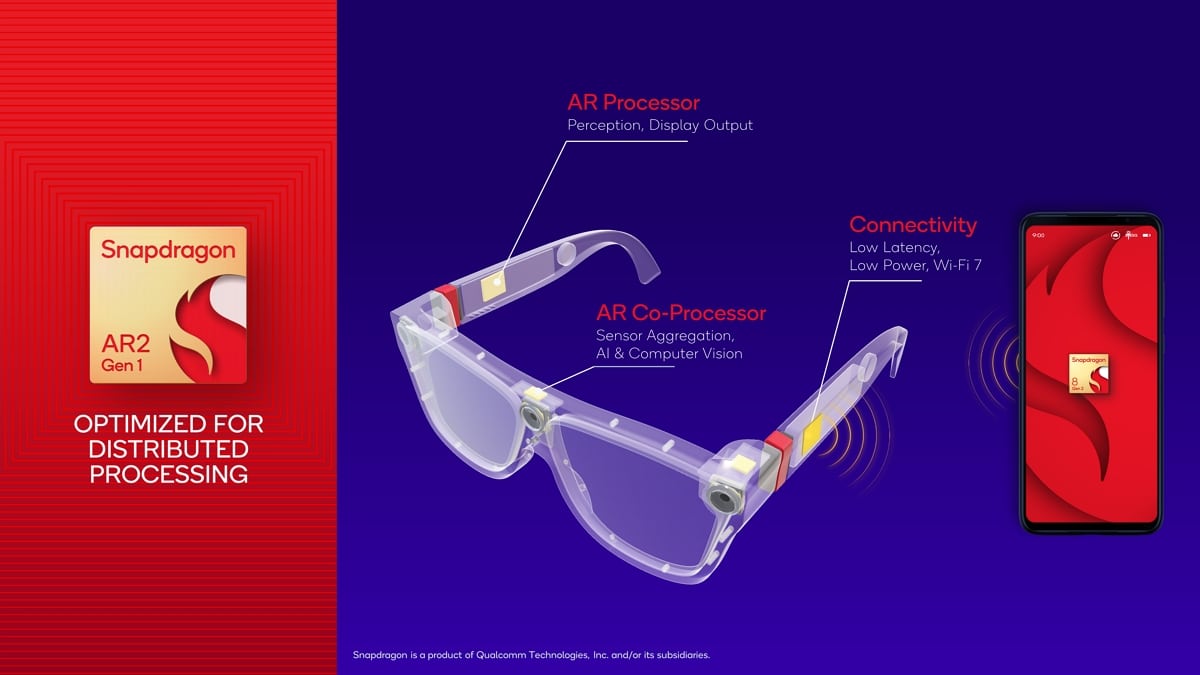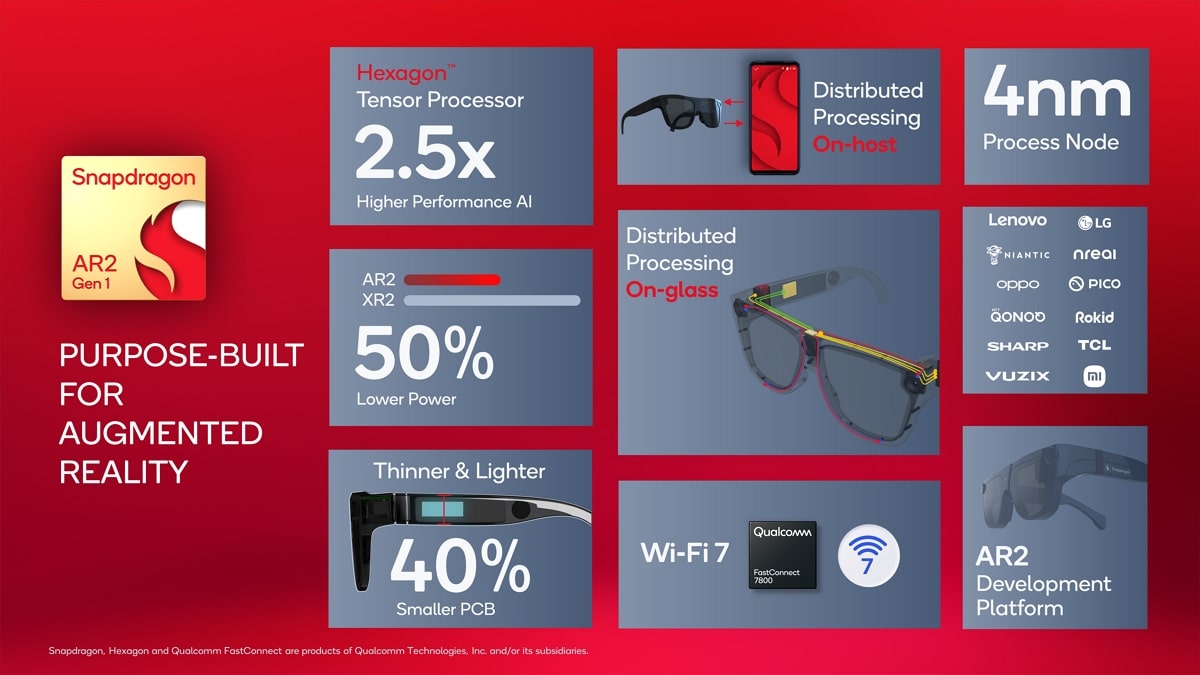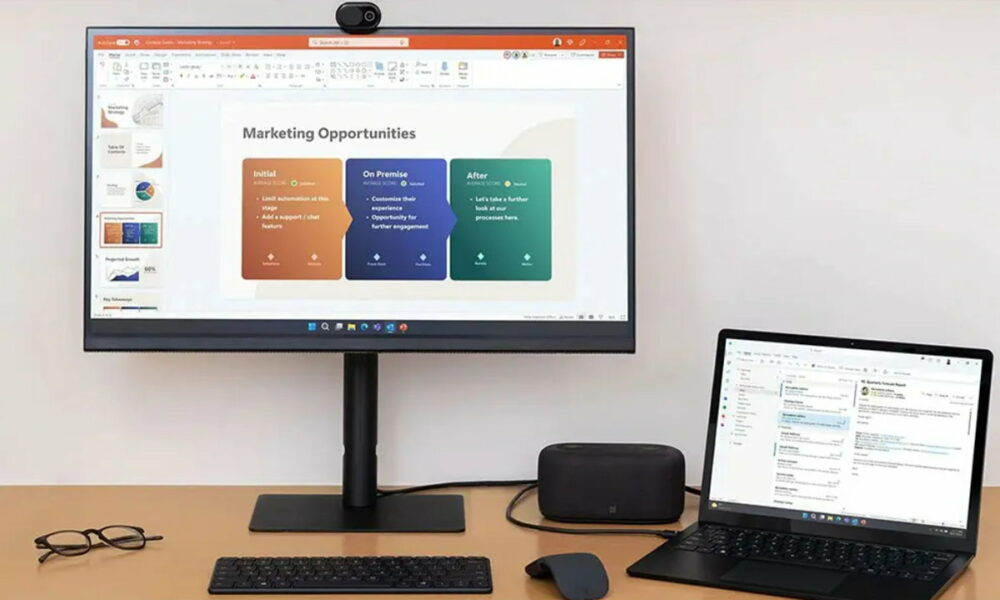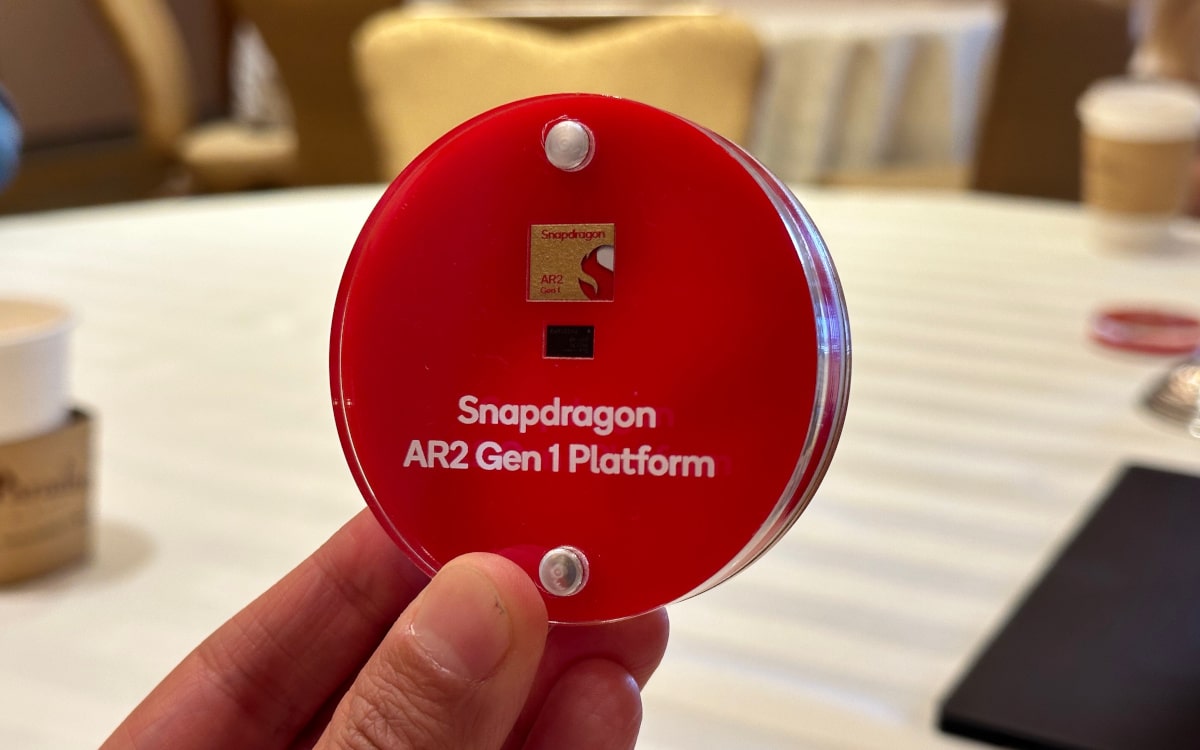
Qualcomm introduced a new chip on Wednesday that the company says will help evolve the augmented reality ecosystem and grow the smart glasses market.
While Qualcomm already has chips for virtual reality headsets, including the Snapdragon XR2 which equips the recent Meta Quest Pro, the company has just announced a brand new SoC made this time for even thinner and lighter devices. Called Snapdragon AR2 Gen 1, the chip is specially designed for augmented reality glasses.
This new chip arrives the day after the presentation of the Snapdragon 8 Gen 2, Qualcomm’s most powerful mobile chip that will power high-end Android smartphones in 2023. It uses a multi-chip architecture that includes an AR processor, an AR coprocessor and a modem for connectivity, all gathered in a single chip engraved in 4 nm. Thus, the main processor takes up 40% less space on the circuit board.
The Snapdragon AR2 wants to revolutionize the eyewear market
Glasses using AR2 Gen 1 technology could be much faster in using cameras for scanning and depth sensing. Indeed, Qualcomm promises faster AI for things like object recognition and hand tracking than even the XR2 chip found on headsets like the Quest 2, but using half the energy. Qualcomm claims it can drive AR glasses using less than 1W of power.
Power efficiency is a crucial element that Qualcomm has put a lot of emphasis on, given that there’s nowhere to hide a big battery in a normal pair of glasses. In total, the new multi-chip architecture offers 2.5 times better AI performance than XR2 chip. This will prove useful for all the augmented reality part of the glasses.
As a reminder, augmented reality allows computer-generated images to be placed above a user’s view of the real world. A good example is the Live View augmented reality feature available on Google Maps for people walking to a destination. The phone’s rear camera provides the user with a live image of what is in front of them, while CGI images of arrows appear over the live image to guide the user to their destination.
Connectivity is also very important for glasses. Like the Snapdragon 8 Gen 2 in phonesthe AR2 Gen 1 is one of the first platforms to support point-to-point Wi-Fi 7 (802.11be) using a FastConnect 7800 modem. The chip therefore offers a wide bandwidth of up to 5.8 Gbps and a Reduced latency to less than 2ms to your phone. The chip therefore promises to make connected glasses very durable, responsive and even more connected.
When will the first connected glasses equipped with the Snapdragon AR2 Gen 1 arrive?
Qualcomm has announced that it has worked in close collaboration with Microsoft when developing the Snapdragon AR2 platform. The AR2 has reportedly attracted interest from several other companies, which are already developing eyewear based on the new platform. Among them, we can cite in particular Lenovo, LG, Nreal, Oppo, Pico, QONOQ, Rokid, Sharp, TCL, Tencent, Vuzix and Xiaomi.
However, it will probably be necessary wait several months before seeing the new generation of connected glasses arrive on the market. Snapdragon AR2 and Snapdragon 8 Gen 2 are optimized for the Snapdragon Spaces Ready Developer Platform, which was designed to help developers reimagine what AR glasses can do.
Anyway, according to experts, augmented reality glasses will probably replace smartphones and will play a central role in our digital lives over the next decade. Apple says augmented reality is the future, but the Cupertino giant has yet to launch augmented reality glasses. We should nevertheless be entitled to a mixed reality headset as powerful as a MacBook Pro from the beginning of next year.
Qualcomm also introduced significant updates to its audio technology, which may also be found in future connected glasses. The news S3 Gen 2 Sound and S5 Gen 2 Sound platforms promise to commoditize the latest listening technologies, including spatial audio with head tracking, latency reduction for gaming, and the newest version of adaptive active noise cancellation (think of the transparency modes that the found on some headphones).
